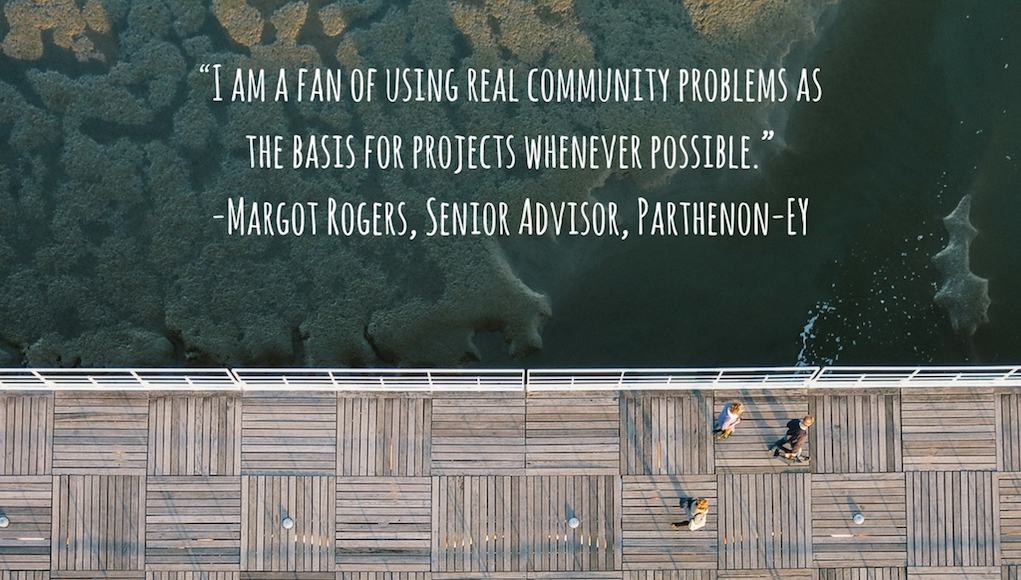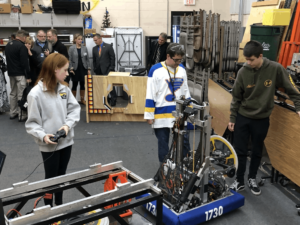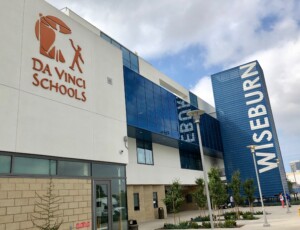Connecting Project Based Learning to the Real World

By Michelle Berkeley
When we surveyed an advisory group of Ed Leaders from a variety of backgrounds about areas for improvement of project based learning (PBL) today, responses were thoughtful, purpose-driven and thematic. One common thread was the belief in the need for PBL to be as “real world” as possible.
Here’s what a few of the Ed Leaders shared about the need for applied learning in PBL:
“There needs to be greater emphasis on student voice and choice driving the projects, structured tie-in to mastery of curricular skills/content, and requirement for students to implement solution in the real world.”
–Maria Langworthy, WW Education Research, Microsoft
“We must create a more expansive definition of student success. PBL doesn’t exist in the vacuum of bubble answer sheets. PBL lives in the world of applied learning, real world problems and public presentations of understanding. We must be willing to use multiple measures to understand students growth and success.”
-Nicole Assisi, CEO and Co-Founder, Thrive Public Schools
“Students need to see the connection between their project work [and] a real-world, authentic task and buy into the project.”
-Mary Catherine (MC) Desrosiers, Sr. Vice President Education and Learning Technologies, Junior Achievement USA
“I am a fan of using real community problems as the basis for projects whenever possible.”
-Margot Rogers, Senior Advisor, Parthenon-EY
“[One area in PBL that needs improvement is] identifying authentic projects that can be used and receive public feedback.”
-Susan Enfield, Superintendent, Highline Public Schools
“…creating spaces for dialogue and connectivity around PBL, including drawing in wider professions and sectors, potentially through technology e.g. digital or virtual spaces”
-Rosie Clayton, freelance education consultant
Two Takeaways
- Perhaps when students tackle a real world issue, the learning becomes more tangible. When that problem is amongst that student’s local community? Maybe even better. Real world PBL where authentic, applied learning takes place can increase a student’s motivation and enthusiasm, and consequently his or her academic performance.
- Furthermore, when PBL addresses real world issues, it can become a truly collaborative effort. The opportunity becomes co-beneficial when community businesses in a variety of sectors and industries create partnerships with schools and form connections with students. Co-learning and mutual feedback can spark innovation and growth, both for a business and within a student.
With real world PBL, the subject matter is applicable to the student’s world, and the learning that takes place is relevant, practical and–well, real.
For more, check out the hqpbl.org website to weigh in on the Framework for High Quality Project-Based Learning and join the #PBL movement.
This blog is part of the High Quality PBL project. This project is supported by Project Management Institute Educational Foundation (PMIEF) and the William and Flora Hewlett Foundation. For more, see www.BIE.org and follow @BIEpbl for all the latest news and resources on high quality project based learning and use hashtag #PBL.
Michelle Berkeley is a project coordinator for Getting Smart and a graduate student at DePaul University.
Stay in-the-know with all things EdTech and innovations in learning by signing up to receive the weekly Smart Update. This post includes mentions of a Getting Smart partner. For a full list of partners, affiliate organizations and all other disclosures, please see our Partner page.







0 Comments
Leave a Comment
Your email address will not be published. All fields are required.